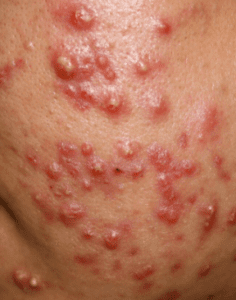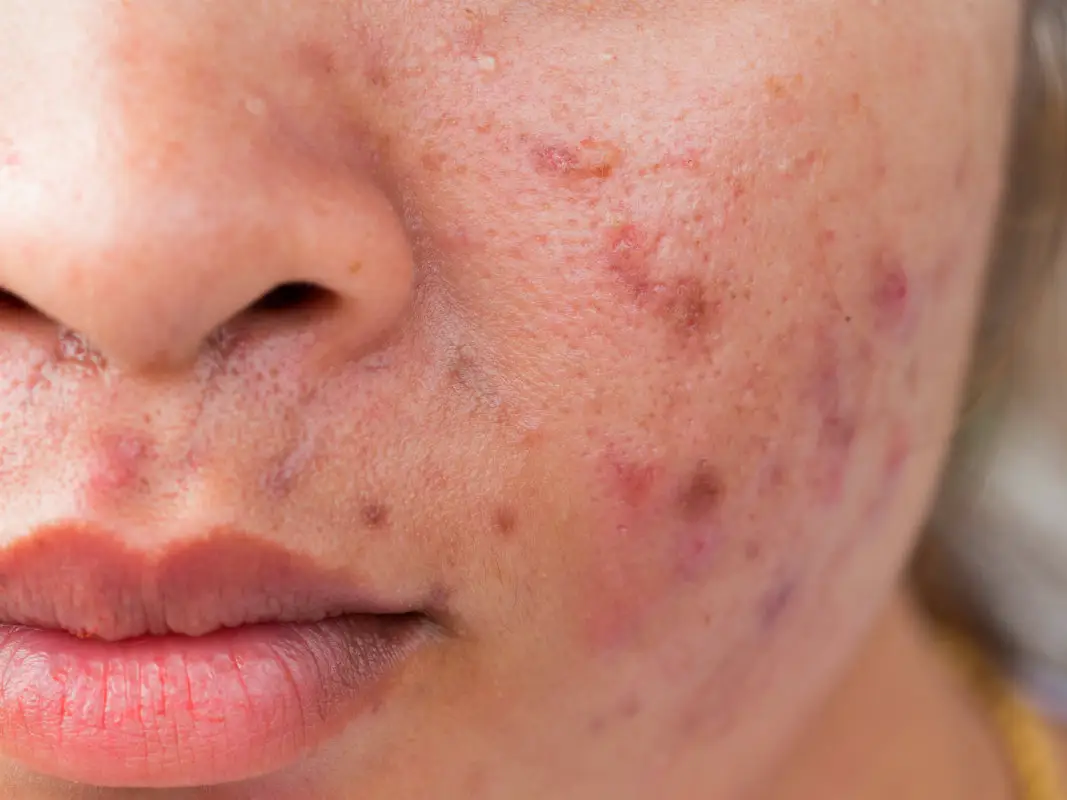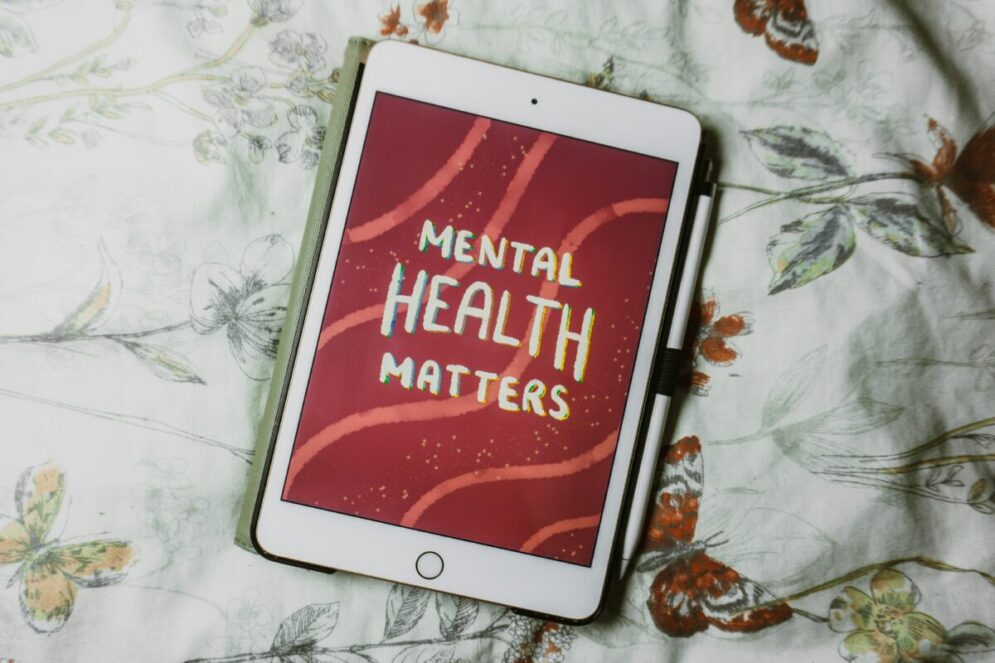Last Updated on June 9, 2023 by Nurse Vicky
What Causes Pimples and Why Do They Leave Dark Spots Behind An In-depth Analysis
Understanding the Fundamentals of Skin
The skin, the body’s largest organ, is a complex system that operates as our first line of defense against the external environment. It’s composed of three primary layers: the epidermis, dermis, and subcutaneous tissue. Pimples primarily affect the first two layers, with the process starting in the epidermis and potentially extending into the dermis.
The Role of Sebaceous Glands
Critical to our story is the sebaceous glands. These microscopic factories situated in the dermis layer secrete an oily substance known as sebum, which travels up through hair follicles to the skin’s surface. Sebum serves to protect and hydrate our skin, maintaining a healthy complexion.
The Formation of Pimples: An Inside Story
Our investigation of pimples starts with an imbalance. A variety of factors can trigger the sebaceous glands to produce an excess of sebum. These factors include hormonal fluctuations, stress, diet, and even certain medications.
The Role of Dead Skin Cells and Excess Sebum
In a well-functioning system, dead skin cells rise to the surface of the pore and are sloughed off. However, when there’s an excess of sebum, these dead skin cells can get trapped inside the pore. This blockage forms the genesis of a pimple.
The Culprit: Propionibacterium Acnes
Enter the bacteria, Propionibacterium acnes. Normally harmless and resident on our skin, these bacteria thrive in the oxygen-deprived environment of a blocked pore. As they multiply, the body’s immune system responds, leading to inflammation and redness – the birth of a pimple.
The Aftermath of Pimples: Why Do They Leave Dark Spots?
Once a pimple heals, it’s not always the end of the story. In many cases, it leaves behind a parting gift – a dark spot. This is particularly common in people with darker skin tones.
Understanding Hyperpigmentation
The dark spots that often follow a bout of acne are known as post-inflammatory hyperpigmentation. These spots are a result of the skin’s response to inflammation and injury.
The Role of Melanocytes
Within the epidermis reside cells known as melanocytes. These cells produce a pigment known as melanin, which gives our skin, hair, and eyes their color. Following inflammation, melanocytes can respond by producing an excess of melanin. This excess melanin darkens and discolors the area, leading to the spots we see post-acne.
Preventing and Treating Pimple-Induced Dark Spots
Thankfully, dark spots are not a life sentence, and a range of treatments can fade or remove these unwanted souvenirs of acne.
Sun Protection: Your First Line of Defense
UV radiation from the sun can exacerbate hyperpigmentation, darkening spots further. Thus, broad-spectrum sunscreen is a crucial ally in the fight against dark spots.
Topical Treatments: Lightening Agents and Exfoliants
Topical treatments such as retinoids, vitamin C, and hydroquinone can help to fade dark spots over time. Chemical exfoliants like alpha and beta hydroxy acids also aid in removing the upper layer of pigmented skin, promoting even
Cleansing your face regularly will help clear up any dark areas left behind by pimples, so make sure to do it at least two times per day! If you’ve got a lot of acne, you may want to try using an anti-acne product that fights both pimples and dirt buildup simultaneously.
In the meantime, make sure to stay hydrated by drinking plenty of water and avoiding sugary drinks, as these will increase your skin’s oil production.
Finally, remember that acne is caused by the accumulation of sebum and oil on the skin, so make sure to avoid products that contain oils or sebum themselves
The dark spots left by pimples are due to the accumulation of oil and sebum Acne is a skin condition that affects people of all ages. It is a type of skin inflammation that results in redness, pus, and blackheads on the skin’s surface.
Pimples are due to the accumulation of oil and sebum, which leave dark spots behind when they burst. To get rid of acne and its dark spots, understand the reasons behind it and find natural ingredients that can help you treat pimples and acne. Read on for more information about this skin condition!
What causes pimples?

Pimples are not always easy to get rid of, but with the help of some over-the-counter products and natural remedies, they can be cleared up in no time. Pimples form when the sebum (oil) produced by the skin accumulates in large amounts.
This accumulation of oil and sebum can be caused by a variety of factors, including genetics and hormones. To reduce the chances of getting pimples, try to keep your skin clean and free from oils and sweat.
Additionally, use over-the-counter products that are designed to clear up acne or use natural remedies like tea tree oil or olive oil.
How to get rid of dark spots caused by pimples?


If you’re looking for a way to get rid of dark spots caused by pimples, you’re in luck! Pimple extract and exfoliating with a pumice stone can both help remove excess oil and reduce the appearance of dark spots.
Furthermore, light scrubs at least twice a week will help exfoliate your skin faster and better manage oil production, leaving you with clearer, brighter skin!
Causes of dark spots caused by pimples

Pimples are a common skin problem that can leave dark spots in their wake.
These spots are due to the accumulation of oil and sebum, which is caused by inflammation. Treatment for dark spots includes the use of antibiotics or topical treatments to reduce inflammation and kill the bacteria responsible for generating the pimples.
In the meantime, keep your skin healthy and free of inflammation by following a skin-care routine that includes sunscreen and a good cleanser.
What are the signs and symptoms of acne?


Acne is a skin condition that affects both adults and children. It can be a frustrating and long-term problem, but there are many treatments available that can help. One of the most important things you can do is keep your skin clean and dry.
This prevents acne from returning and allows the skin to heal faster. Additionally, the signs of acne include dark spots on the skin caused by oil and sebum accumulation, which may appear as pimples or nodules.
If you experience any of these signs and symptoms, it’s important to see a doctor. There are many treatments available that can help acne, but it’s always best to consult with a dermatologist before starting any treatment.
top 7 natural ingredients for treating pimples


Pimples can be a frustrating experience, but there are plenty of remedies available that are natural and safe.
Here are the top 7 ingredients that can be used to treat pimples in various ways:
1. Tea tree oil is a natural antimicrobial that can be used topically to treat acne.
2. Olive oil is a natural moisturizer that can be used orally to reduce inflammation and improve acne symptoms.
3. Coconut oil has anti-inflammatory and antibacterial properties, which make it a good choice for topical applications.
4. Garlic is known to be an effective treatment for acne due to its anti-inflammatory and antifungal properties.
5. Fasting is a natural way to clear acne by reducing the accumulation of oil and sebum on the skin.
6. Chrysin is a natural ingredient that has anti-inflammatory and skin-soothing properties.
7. Mineral water can be used topically to keep skin hydrated and acne-free
Frequently Asked Questions
What are the causes of dark spots left by pimples?
If you have dark spots left by pimples, then it’s likely that you have oily skin. Oily skin is the main culprit behind the production of acne-causing bacteria and products like sebum.
Sebum is an oil-rich secretion that is produced by the sebaceous glands. It’s responsible for keeping your skin moisturized and healthy. However, when excessive amounts of sebum are produced, it can lead to acne breakout.
As mentioned earlier, dark spots left by pimples are caused by the accumulation of oil and sebum. The darker the spot, the more oil and sebum have been accumulated.
In order to reduce the appearance of dark spots, it’s essential to prevent excessive sebum production. To do this, you can use acne-fighting retinoids or glycolic acid treatments.
Why do pimples leave dark spots on the skin?
Pimples leave dark spots on the skin due to the accumulation of oil and sebum. This mixture creates an environment that is conducive for pimples to form.
Additionally, blackheads are the precursor to acne lesions, so if you want to prevent them from appearing in the first place, make sure to keep your skin clean and free of oil and sebum.
Conclusion
Pimples are caused by the accumulation of oil and sebum. This mixture is toxic and can cause inflammation, scarring, and dark spots. To get rid of dark spots caused by pimples, remedies that contain natural ingredients are necessary. Make sure to read through the entire blog for more information on this topic.




